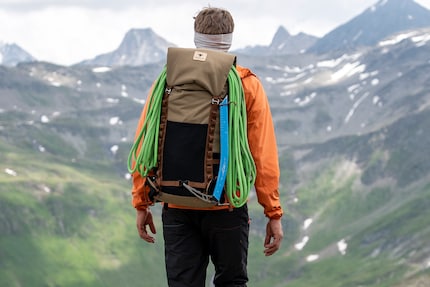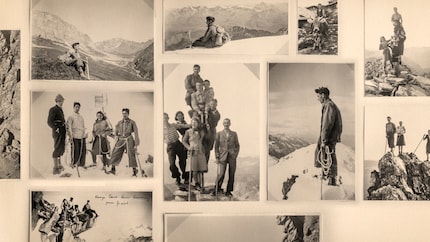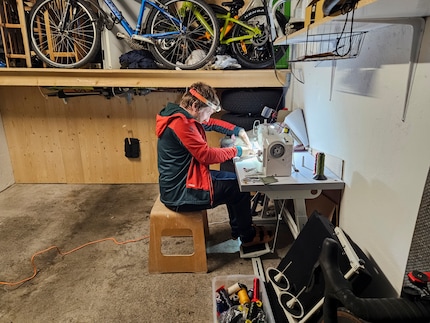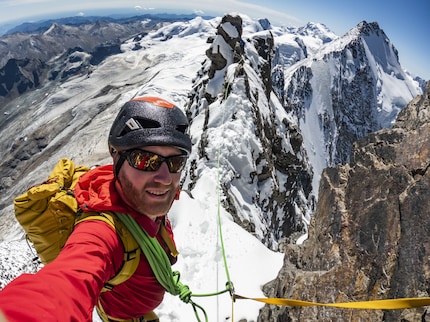
Background information
«Trendy designs are our biggest enemy» – David Pompa on good design
by Pia Seidel

Retro-look backpacks are stylish, but often unsuitable for mountaineering and other outdoor adventures. Company founder David Freitag wants to change that with his brand Nola. They develop backpacks just as suited to the city as the mountains.
David Freitag has won several awards as a product developer for outdoor equipment. Most recently, he was head developer for the Swiss brand Bach. But a few years after the takeover by the manufacturer Scott, his department was closed.
«Obviously it was a shock, but also an opportunity,» says David. «What would I do if I could develop a backpack completely from scratch?» he wondered. And so he set to work.
David admits that there are plenty of rucksacks on the market. But they’re either ultra-modern and geared entirely to performance, without soul or flair, or they’re retro-styled and would look good in the city but fall apart in alpine terrain.
His goal was to develop backpacks that could do both: perform during outdoor activities in the mountains and turn heads in the city with their style. They needed to offer space for a hydration system, hiking poles, ice axe, action camera and attachments for climbing carabiners, ice screws and a rope when hiking or mountaineering. Equally, they had to have practical compartments for laptops and everyday items in the city. It was important for David that they were easy to repair and made from recycled materials.

He was inspired by rucksacks from the 1940s, or more precisely by photos of his grandfather from Graubünden, who instilled a love of the mountains in him. «My grandad wasn’t interested in climbing the highest mountain or breaking records. What counted for him was the experience of enjoying the fresh mountain air and spending time outdoors,» David recalls in an interview.

The company name Nola, after the Nolla torrent, also traces back to the canton of Graubünden. To make the name easier to pronounce internationally, one «l» was dropped.
Old rucksacks have one decisive advantage over newer ones: from the outset, they were designed to be easy to repair. David carried it forth and sewed this tradition into his creations. For instance, instead of a pull system, there’s a cord with knots and eyelets. The back section and hip belt are interchangeable. «Every element is designed so that it can be repaired or replaced without much effort should it break years down the line,» he says.

He was also mindful of sustainability when it came to the fabric. The material looks like cotton but is 100 per cent recycled polyester, and the seams have been reduced to a minimum. David explains this makes the backpack less susceptible to tears while also providing fewer places for moisture to get in. The fabric is coated on the inside and therefore practically waterproof – except for the seams.
With so much Swissness in the product process, it begs the question why Nola produces in Vietnam. The brand’s answer is that’s where there are well-trained needleworkers along with buckle and zip suppliers. «You won’t find a factory in Switzerland that can produce 3,000 backpacks quickly,» says David. Costs played a lesser role.
The prototypes were tested by students, outdoor guides and mountain sport enthusiasts. It was important to David that the fit was right for as many people as possible. This was achieved with the help of anthropometric data and tests with people of different builds. «In most cases, the backpacks fit adults between 155 and 195 cm (roughly 5 and 6 foot).»

Their Viandar range backpacks («hiking» in Romansh) will be available with 15-, 25- and 35-l capacity. To finance the production, David launched a Kickstarter campaign, which has already reached its funding target. We still don’t know if and when the backpacks will be available in our range.
Research diver, outdoor guide and SUP instructor – I love being in, on and around water. Lakes, rivers and the ocean are my playgrounds. For a change of perspective, I look at the world from above while trail running or flying drones.
Interesting facts about products, behind-the-scenes looks at manufacturers and deep-dives on interesting people.
Show all
Background information
by Pia Seidel

Background information
by Patrick Bardelli

Background information
by Stefanie Lechthaler